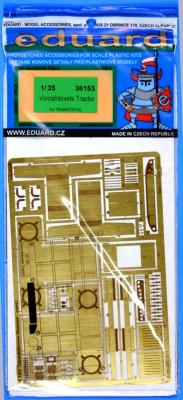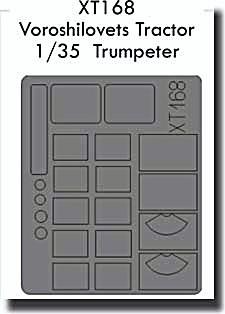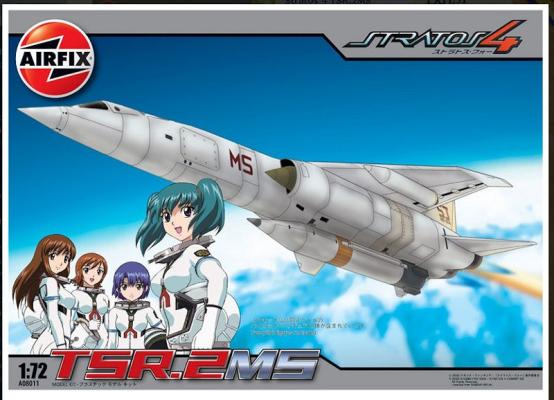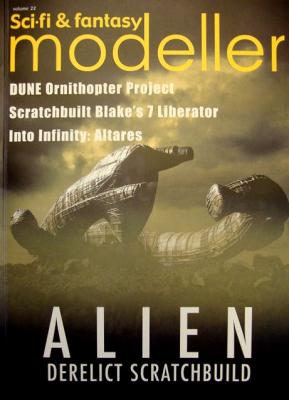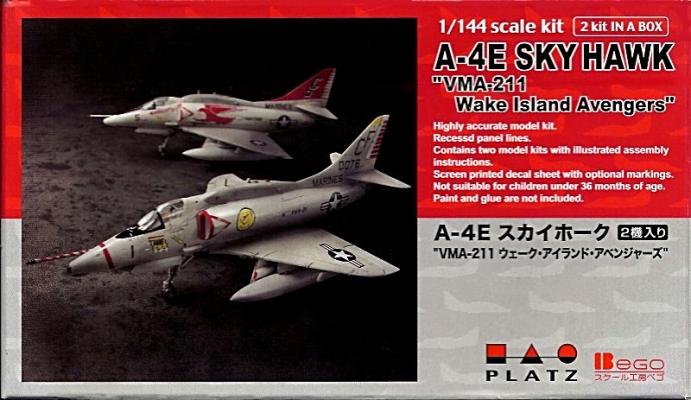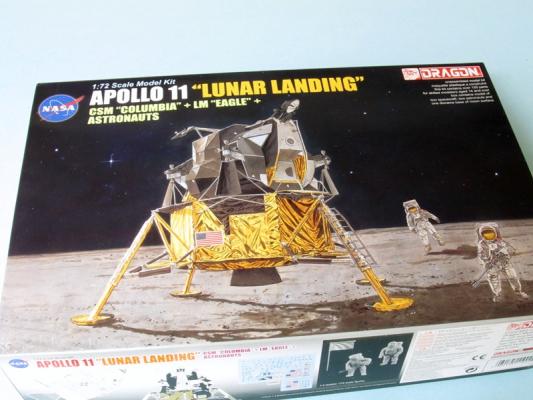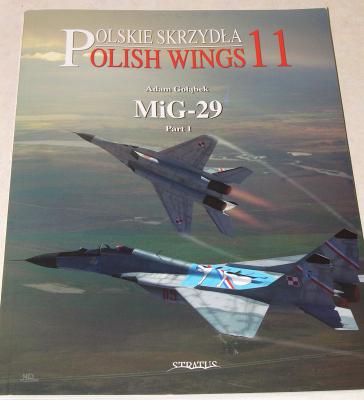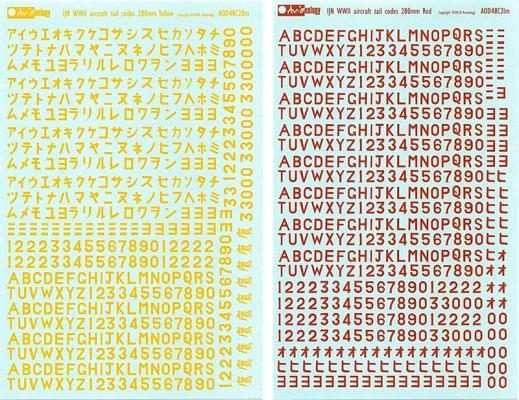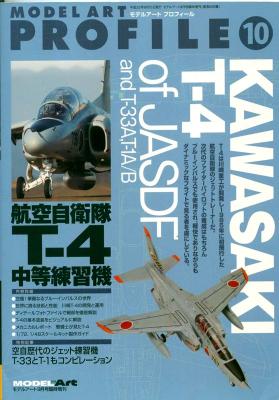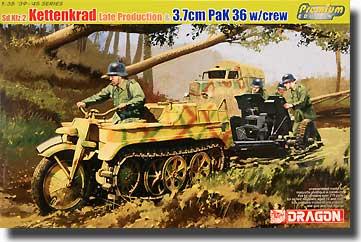Page 1 has the replacement of the front bumper after removing the plastic one. You will need a PE bending tool as the replacement part is several inches long. This step also replaces the rear fender support with a PE U channel. A bending tool would be helpful here. There are replacement foot petals, but I did not use them. They are deep in the cabin and are hard to see unless you leave the doors open. There are two front grill add-ons that look very good. The final item on this page is the addition of PE chains to the towing bolts. I did not place them on until very late in the build, as these have a tendency to pop off during handling.
October 2011
These sets of masks are for the use in painting the model without painting the clear glass windows and lamps. The masks are made of a vinyl type of material and are different from the yellow “Tamiya” type of tape. Because they are of this vinyl type of material, they are much stiffer, but do allow you to place them fairly easily. However, it became a task to remove them without popping the glass out. There is a two part mask for the windshield that allows for a depiction of a dirty windshield that has been wiped clean by the windshield wipers. This worked very well and does make the weathering process easier.
My son was really excited when he saw that a model of the Stratos 4 was being put out by Airfix. He is an avid Anime fan and wanted us to build this model together. Before the kit even arrived, he had already brought out his DVDs of the Stratos 4 series. The Stratos 4 series was done by Studio Fantasia and Bandai Visual and directed by Takeshi Mori. The story is about the comet defense system that was formed when, 50 years earlier, scientists discovered that a group of comets was on a collision course with the Earth. The defense system comprises a two-tiered plan – the primary a space-based comet blaster group and the secondary a ground-based meteor sweeper group. The idea is for the space-based Comet Blaster ships to blow up the comets and the ground-based meteor sweeper group cleans up any chunks that remain too big from the initial explosion.
Most of the series follows the female pilots of the ground-based units that are on Shimoji Island in 2024.
This is my first go-around with Sci-Fi & Fantasy Modeller. I’d heard of the magazine/publication, but never had the opportunity to look at one up close in my area of the country. I must say that the first thing that immediately caught my attention was that this is not a typical “magazine”, but more of a soft-cover book. The materials for the publication are very sturdy with the pages made of very heavy paper stock, pretty much guaranteeing that this will be around for years as a reference or inspirational item.
I would like to express my sincere thanks to Platz for providing this kit to IPMS/USA and to them for allowing me to review it.
The A-4 Skyhawk originated as a private venture design under a team headed by Ed Heinman. When the US Navy began looking for a replacement for the AD Skyraider Douglas Aircraft presented their new design. The Skyhawk went on to be one of the most successful post-WWII aircraft to serve the US Navy. A total of 2,960 A-4s were built in many variations and they flew in the service of as many as ten countries.
On July 21, 1969 the Apollo II astronauts landed on the moon fulfilling President Kennedy’s pledge to land a man on the moon before the decade was complete. Project Apollo was a massive federal program that sparked new technologies, new ideas, new rocket designs and engines that led to this event. Five more flights to the moon resulted in landings that furthered our understanding of that satellite and confirmed new theories on its origins. Apollo captured the imagination of that generation and ones that came after of what could happen when a nation set goals and achieved them.
STRATUS Books is continuing its series to publish books on all the aircraft used by the Polish Air Force. This eleventh volume is a pictorial study of the 18 Mig-29s in Polish use from 1989 to 2009. The opening eight pages discuss the history of the purchase and operation of these Mig-29s from Russia and the Czech Republic, as well as the color and markings used by these aircraft. The remainder of the book covers each aircraft with multiple photos, profiles, and, for most of them, color 4-views. Special markings and commemorative schemes are also discussed and illustrated along with badges and other personal markings. There is one chart that lists each aircraft by code number, serial number, camouflage scheme, and notes on each operational history. Another handy chart lists Mig-29 by country (Czech, Russia and Poland) giving us the camouflage colors used in FS numbers. Finally, five large photos at the end of the book cover the cockpit.
Tail code markings for the Imperial Japanese Navy in WWII are some of the more difficult things for a modeler to replicate accurately. Aviaeology has come to our rescue!
A few years back, I saw that Aviaeology had issued some WWII Japanese tail markings. I was excited at the prospect, but waited too long to order them, and missed out on the offering. They were sold out before I could see what they were like. Aviaeology has reissued their series of IJN Tail Code markings, and has made some improvements in the process. This review is for their RED and YELLOW 280mm markings, but they also sell markings in White and Black. The 280mm refers to the size of the tail markings on the actual aircraft – in this case the markings are scaled down to 1/48 and are about 6mm.
Kawasaki T-4 of the JASDF and T-33A, T-1A/B is the newest book in the series of “Profiles” by Model Art. This is #10 in the series and is just as good as the rest.
This softbound book contains 136 pages and is jammed packed with color photos, line drawings, and color profiles of the aircraft.
As you would imagine the main focus of this book is the Japanese Kawasaki T-4 Trainer. It is covered here in photo detail, and this book will be a great help to anyone building one of the Hasegawa kits. The first 16 pages are full color images of different units operating the T-4. Many of these are very colorful – including the Blue Impulse demonstration team. Pages 18-26 contain some background and development information on the T-4. While the vast majority of the text in this book is in Japanese, these pages have an English translation at the back of the book!
The Sd.Kfz.2 Kleines Kettenkraftrad (ketten is German for tracked, kraftrad is German for motorcycle) was one of the more unique vehicles designed and used during World War II. Initially designed for use by the airborne troops, and able to be carried inside of a Junkers Ju-52, the vehicle was used to lay communication cables, pull loads, and could carry two soldiers on the rear bench seat (probably not comfortably though). Towards the end of the war, the Kettenkrad was also used for towing aircraft in order to help conserve their aviation fuel. When operating at higher speeds, steering was actually accomplished by applying the brakes to the tracks, as the front wheel was more useful at lower speeds. There are some photographs that exist of the vehicles in use with no front wheel installed. During the war, two versions of the vehicle were produced with a total production of some 8,345 units.

